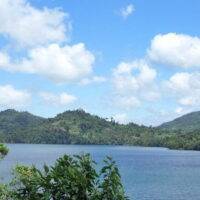Visiting Angkor Wat: A Complete Travel Guide

Disclaimer: This post may contain affiliate links, which means that if you click on any of those links and make a purchase, I’ll get a small commission, at no cost to you, to help support this website.
During our trip to Thailand, we decided to cross over to Cambodia and finally visit Angkor Wat — something we had dreamed about for years. While it absolutely lived up to the hype, a few things surprised us: the vastness of the site, how exhausting the heat can be, and how much more there is to see beyond the main temple.
This guide will help you plan your visit with all the essential tips we wish we had known.
Brief History of Angkor
Angkor was the capital of the Khmer Empire from the 9th to the 15th century and is one of the most important archaeological sites in Southeast Asia. At its height, the city stretched over 1,000 square kilometers and supported a population of up to a million people—making it one of the largest pre-industrial cities in the world. The area is home to dozens of temples, hydraulic engineering systems, and monuments that reflect the empire’s wealth, power, and architectural genius.
Construction at Angkor began in the early 800s under King Jayavarman II, who declared himself a “universal monarch.” Successive kings expanded the city and commissioned monumental temples, including Angkor Wat, Bayon, Ta Prohm, and Preah Khan, each blending Hindu and later Buddhist influences.
The fall of the Khmer Empire in the 15th century, due to internal decline and external invasions, led to the site’s gradual abandonment.
Today, Angkor is a UNESCO World Heritage Site and stands as a testament to the ingenuity and spiritual vision of the Khmer civilization.

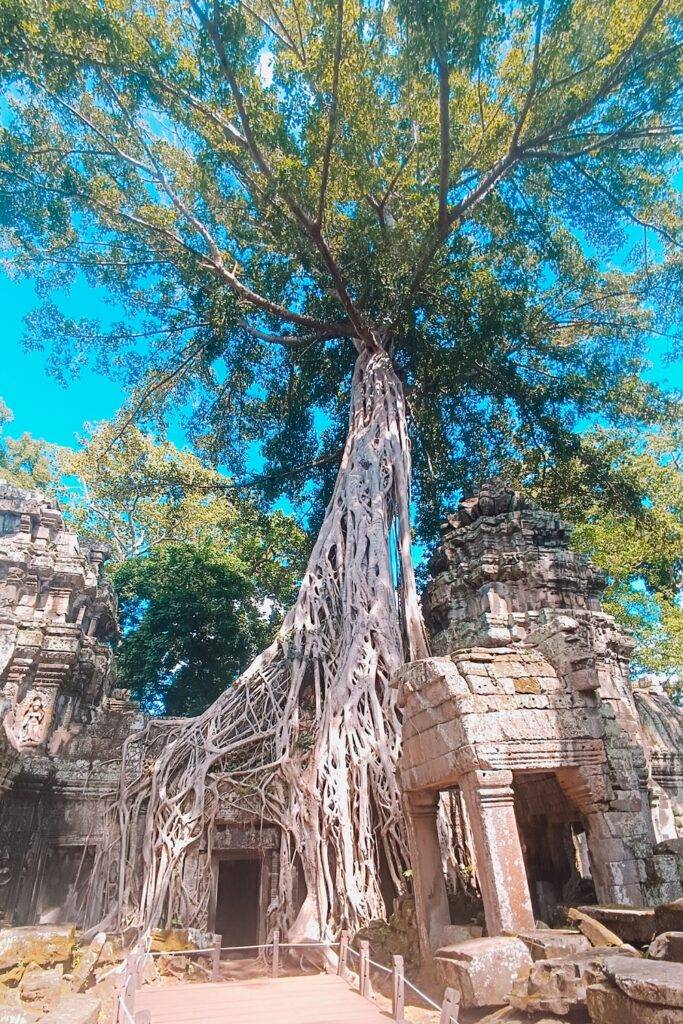
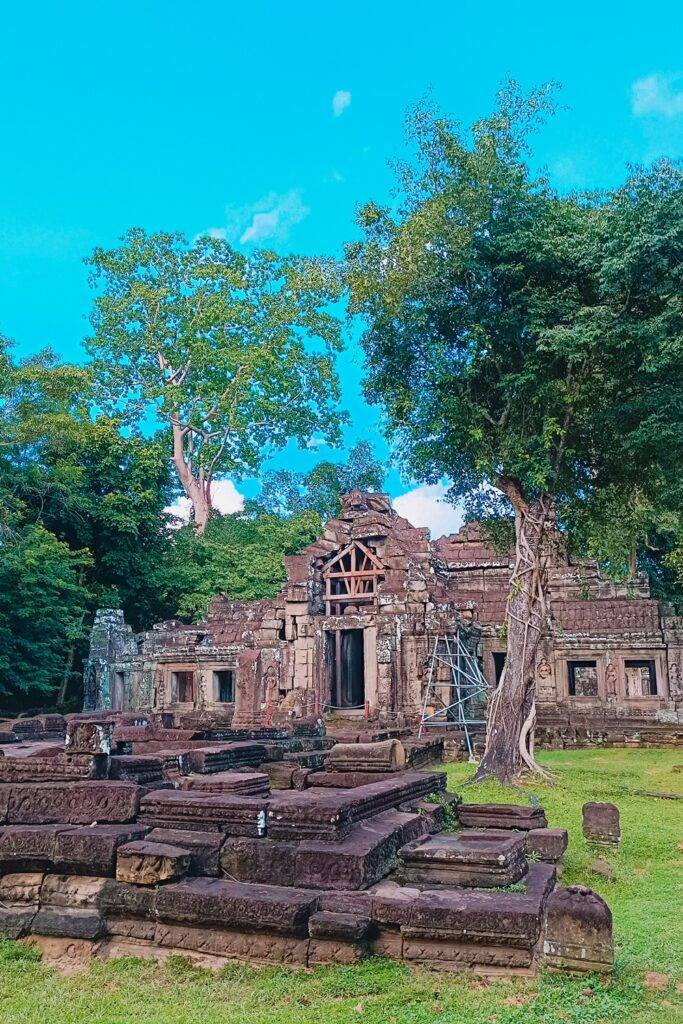
Things to Know Before You Go
- Angkor Wat is just one temple in a massive complex called the Angkor Archaeological Park — you’ll be exploring dozens of ancient sites.
- You’ll need at least two days to get a good feel for the place. If you’re short on time, one full day can cover the highlights.
- The heat and humidity are intense. Wear breathable clothes, stay hydrated, and start early.
- Be prepared for lots of walking and climbing steep temple stairs. Good footwear is essential.
- Temples are still considered sacred, so dress respectfully: cover shoulders and knees.
Getting to Angkor Wat
Angkor Wat is located just outside Siem Reap, Cambodia. Flights to Siem Reap are easy from Bangkok, Chiang Mai, and other regional hubs.
You can also arrive by land from Thailand via the border crossing at Poipet, but this option can be slow and a bit chaotic.
Getting Around Angkor Wat
You can explore the complex by tuk-tuk (most common), car, scooter, or bicycle.
We hired a tuk-tuk driver for two days, which was perfect for comfort and flexibility. Expect to pay between US$15-25 for the day
If you’re confident with directions and heat, cycling is possible but tiring. Some hotels and tour companies also offer group van tours or private guides.
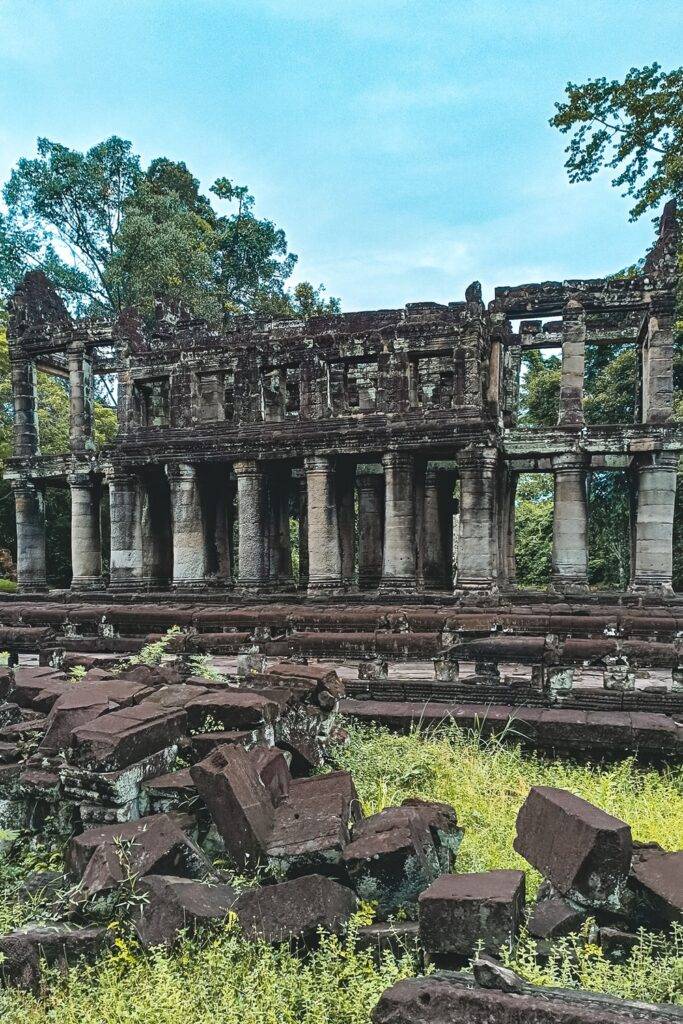
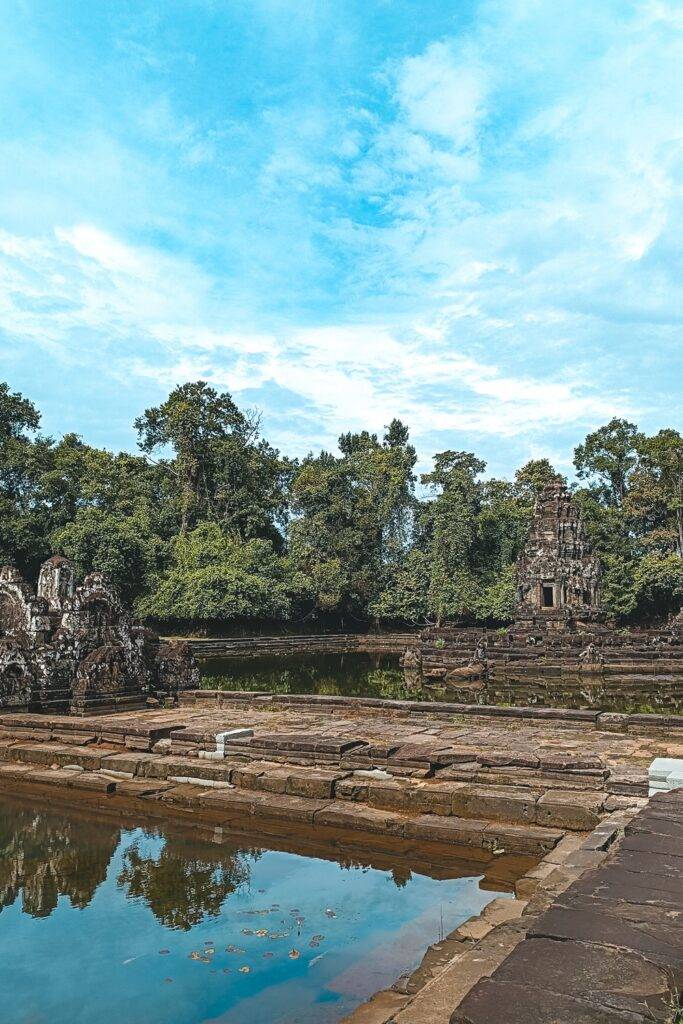

Angkor Wat Entrance Fees
- 1-day pass: $37 USD
- 3-day pass: $62 USD (valid for 10 days)
- 7-day pass: $72 USD (valid for one month)
We chose the 3-day pass, which allowed us to pace ourselves and explore both the small and grand circuits without rushing.
Angkor Archaeological Complex Hours
Most of the temples in the park are open from 7.30am – 5.30pm.
Some of the temples have extended hours to allow people to watch the sunrise and/or sunset:
- Angkor Wat and Srah Srang can be visited from 5 am – 5.30 pm
- Phnom Bakheng and Pre Rup can be visited from 5 am – 7 pm
Buying Your Tickets
Tickets are now sold online (super easy process, you don’t need to print them) or in person at the Angkor Ticket Center, about 4 km from Siem Reap.
Bring your passport — your photo will be printed on the ticket.
Keep your ticket (on your phone is fine) on you at all times — it will be checked at the entrance to the park and again at each major temple.
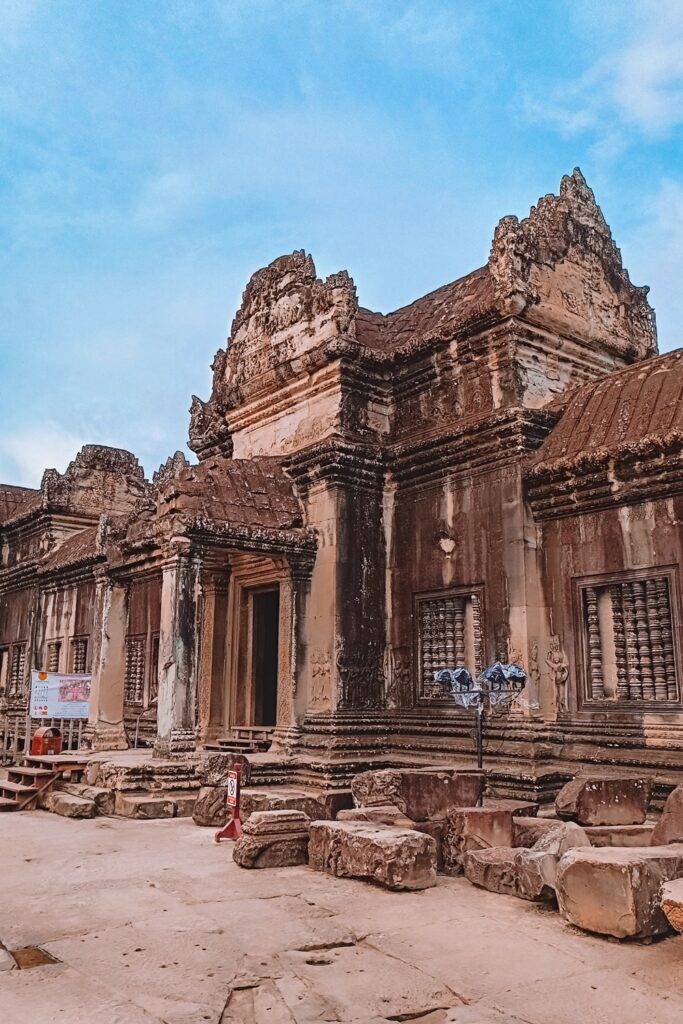


Where to Watch the Sunrise
We did the classic sunrise at Angkor Wat itself, and yes — it’s crowded but still worth it. The best spot is on the left-hand side reflecting pool in front of the main temple. Arrive by 5:00 AM to grab a good spot and bring a flashlight or headlamp.
It’s a peaceful moment as the sky turns from dark blue to gold behind the iconic towers.
Tip: After sunrise, don’t rush into the temple — take a slow walk around the perimeter while most crowds are still taking photos.
The other good thing about going for sunrise is that you get a couple of cooler hours to visit the temples.
You could also go to Srah Srang, watching the sun rise above the reservoir. It will definitely be less crowded.
Where to Watch the Sunset
For sunset, we headed to Phnom Bakheng, the most popular viewpoint. It offers panoramic views and can be beautiful at golden hour. However, it’s regulated — only a certain number of people are allowed up at a time, so get there by 4:30 PM at the latest.
Another good option is Pre Rup, less crowded, still scenic.
My opinion about the sunset and sunrise: everyone raves about the experience and recommends it, but I felt let down. It’s crowded, and the sunrise/sunset in itself wasn’t that nice. I guess it depends on the weather, the sky didn’t turn orange and red like you can see in some photos, which was a bummer.
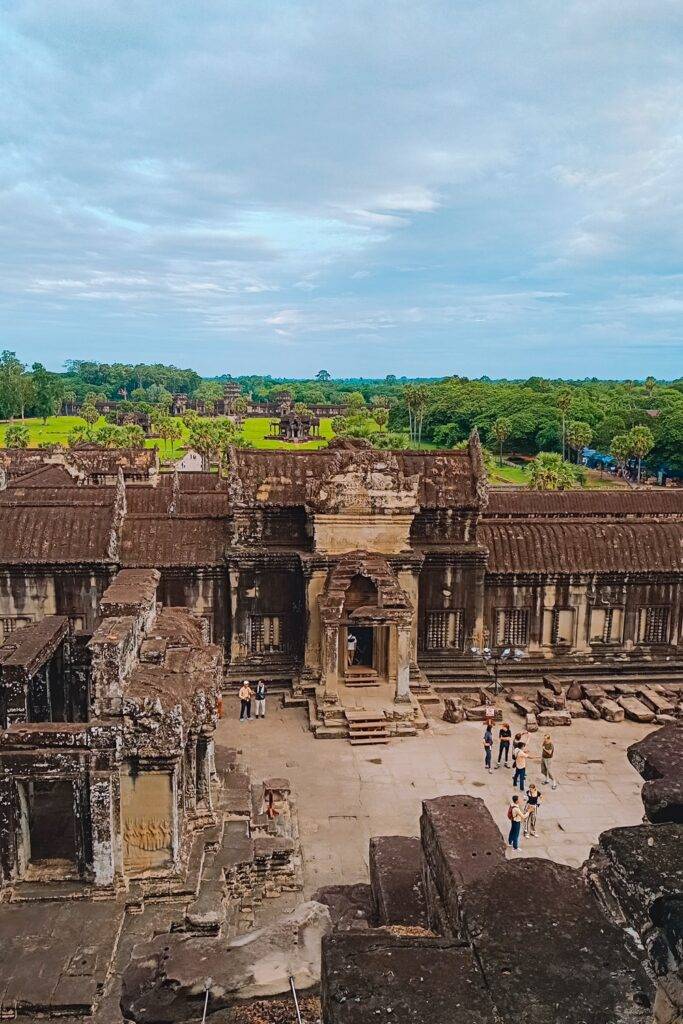
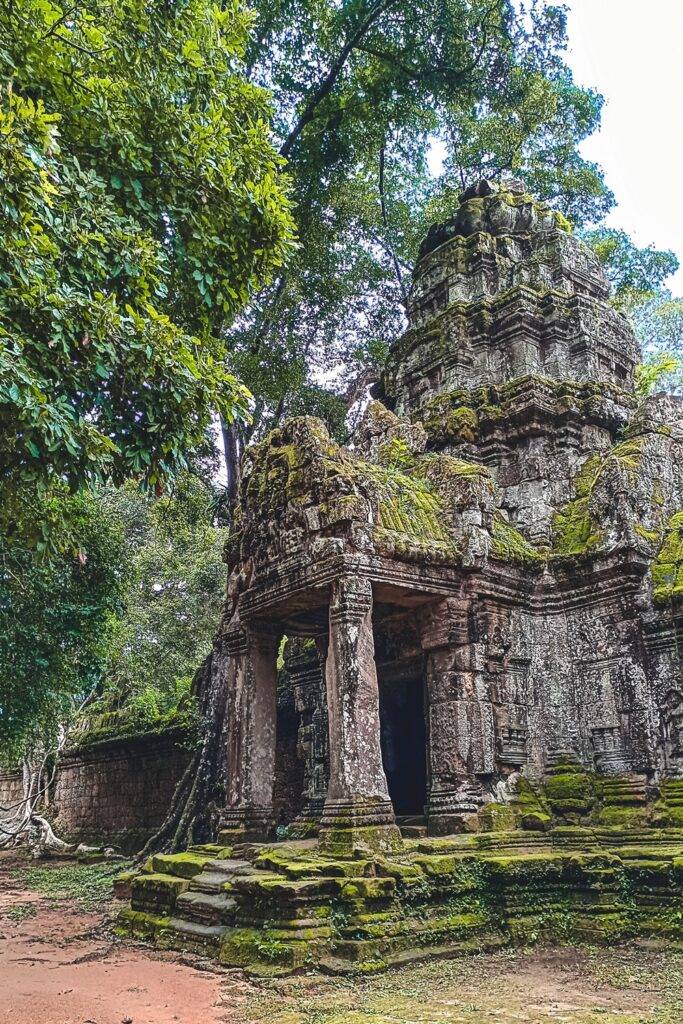

The Small Circuit and Grand Circuit Tour Routes
You might be tempted to try to see everything in one day, like I did, but I quickly realized it would be too much. It gets really hot, and it’s a lot of walking with many stairs. It’s good to pace yourself and have ample time to rest.
Small Circuit Tour Route (best for Day 1)
This loop includes the most famous temples and is perfect for your first day:
- Angkor Wat
- Bayon (faces in the trees!)
- Baphuon
- Terrace of the Elephants
- Ta Prohm (the “Tomb Raider” temple, partly reclaimed by trees)
- Banteay Kdei
- Srah Srang
You can do this circuit by tuk tuk in about 4–6 hours, depending on how much you explore.
Grand Circuit Tour Route (best for Day 2)
Covers temples that are a bit more spread out and less crowded:
- Preah Khan
- Neak Pean
- Ta Som
- East Mebon
- Pre Rup
These temples feel more peaceful and off the beaten path — great for photography and seeing the variety of Khmer architecture.
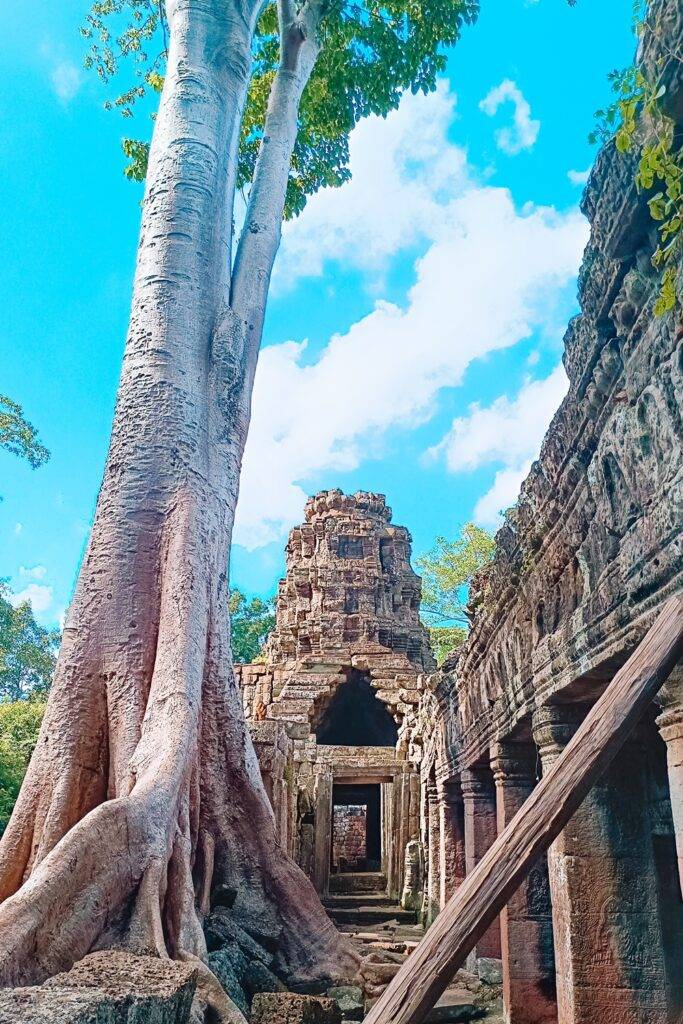
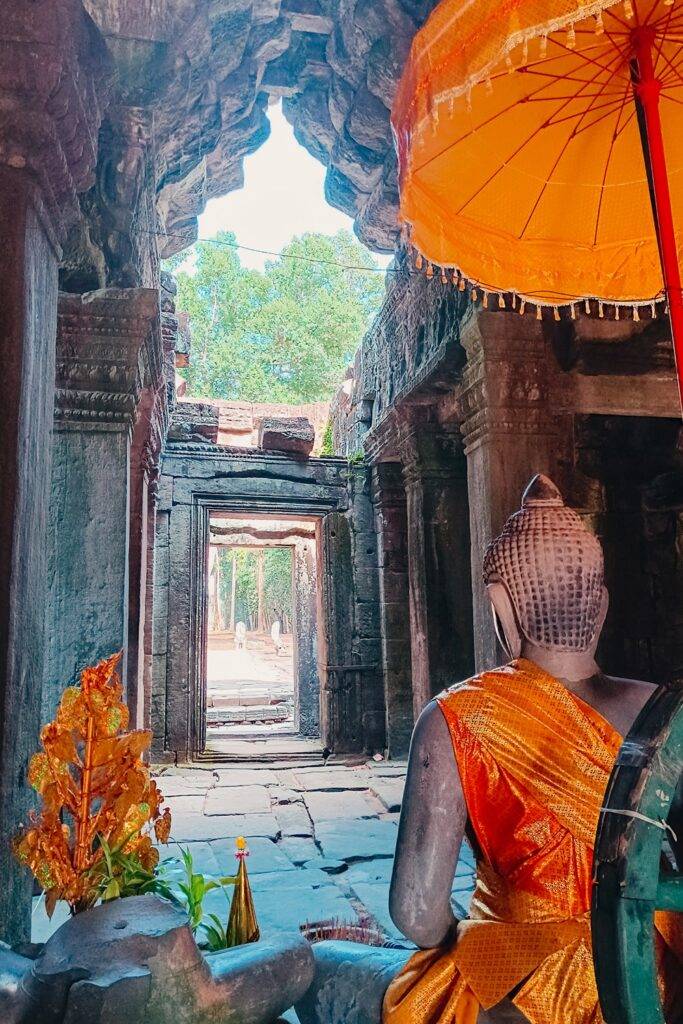

Not-to-Miss Temples in Angkor Wat
If you’re short on time, here are our personal favorites:
- Angkor Wat – Naturally! The most iconic for a reason.
- Bayon – We loved the serene stone faces and the maze-like interior.
- Ta Prohm – It’s magical seeing the trees and ruins intertwined.
- Preah Khan – A bit further out, but peaceful and full of crumbling, photogenic corners.
- Banteay Srei – A bit of a drive from the main park, but its intricate pink sandstone carvings are unique.
Best Time to Visit Angkor Wat
Weather & Seasons
Cambodia has two main seasons:
- Dry Season (November to March) – This is the most popular time to visit. Expect cooler mornings and (relatively) less humidity. December and January are the busiest months, so temples can get quite crowded — especially at sunrise.
- Hot Season (April to June) – Temperatures can climb well over 35°C (95°F). If you’re okay with the heat, you’ll benefit from fewer crowds — just plan your temple visits early in the day and take breaks.
- Rainy Season (July to October) – While it sounds like a deterrent, don’t rule it out. Rains are usually short and intense, often in the afternoon. The moats fill up, the jungle is lush, and the temples look especially atmospheric with stormy skies and fewer people around. Just pack a poncho! We visited in September and didn’t get any rain but it sure was humid and hot.
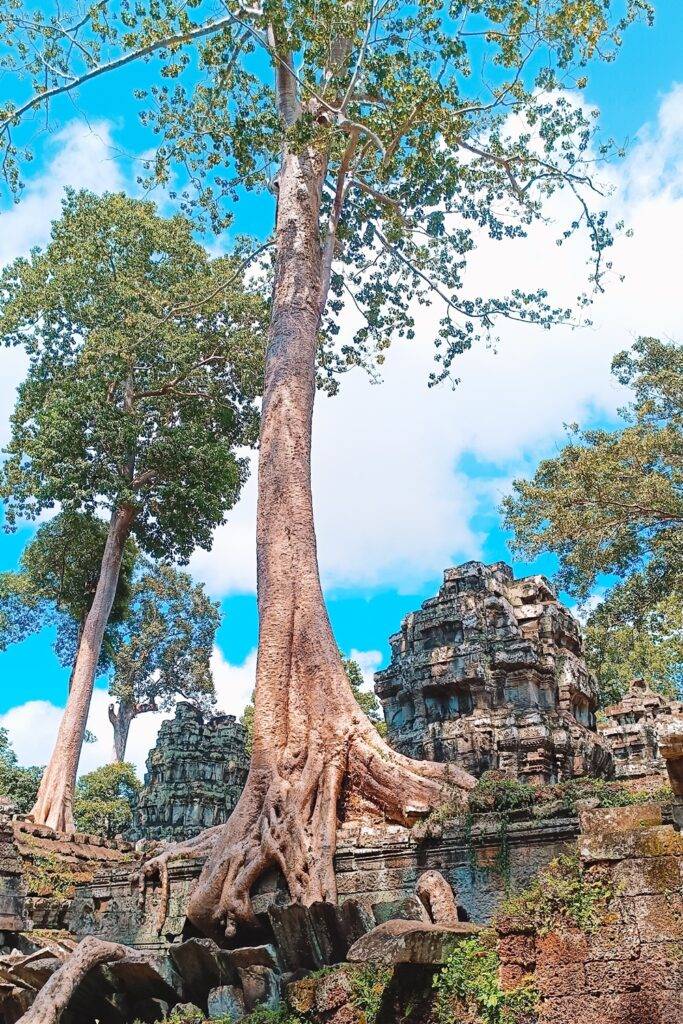

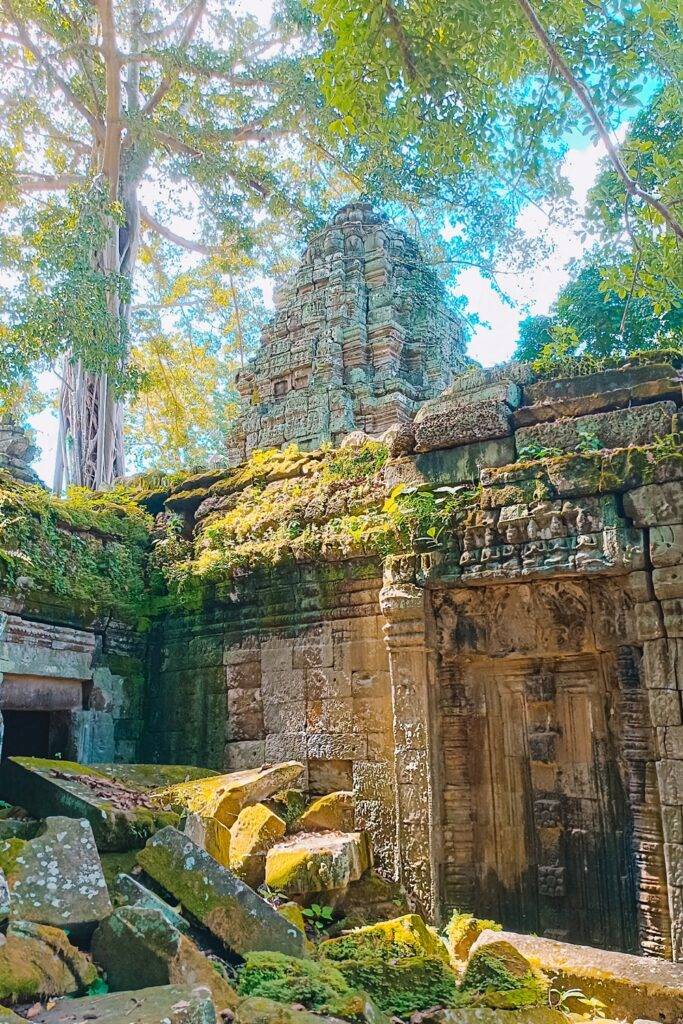
Time of Day Tips
- Sunrise is the most popular time to visit Angkor Wat. It’s magical, but very crowded. Arrive early (like 4:30–5:00 AM) to secure a good spot.
- Midday is when the crowds head to lunch — perfect for visiting some of the most popular temples.
- Late afternoon offers softer light for photos and is a good time to hit sunset spots like Pre Rup or Phnom Bakheng.
Our tip: If you can, plan for at least 2–3 days in the park. You’ll avoid burnout and be able to appreciate the sites without rushing. If you visit independently, I’d recommend visiting in the morning, going back to rest for a while at your hotel, and heading back out mid-afternoon.
What to Wear at Angkor Wat
Angkor Wat is an active religious site, so dressing appropriately is essential — not just out of respect, but because they will deny you entry to some temples if your attire doesn’t meet the requirements.
Dress Code for Temples
- Shoulders and knees must be covered for both men and women.
- Avoid tank tops, spaghetti straps, crop tops, or short shorts.
- Lightweight, breathable linen or cotton pants and a loose T-shirt or long-sleeve shirt work best.
- You can also wear a sarong or scarf over shorts, but officials can be strict — pants are safer.
Footwear
- There are no specific footwear rules, but you’ll be doing a LOT of walking and climbing.
- Wear sturdy sandals or walking shoes with good grip.
- Avoid flip-flops if you can — many temple stairs are steep and uneven.
Extras to Pack
- Hat and sunglasses – There’s not much shade.
- Sunscreen and bug spray
- Refillable water bottle – Staying hydrated is key.
- Small daypack – For your ticket, camera, snacks, and other essentials.
Tip: A change of shirt can be a lifesaver if you’re out all day — you’ll definitely sweat.
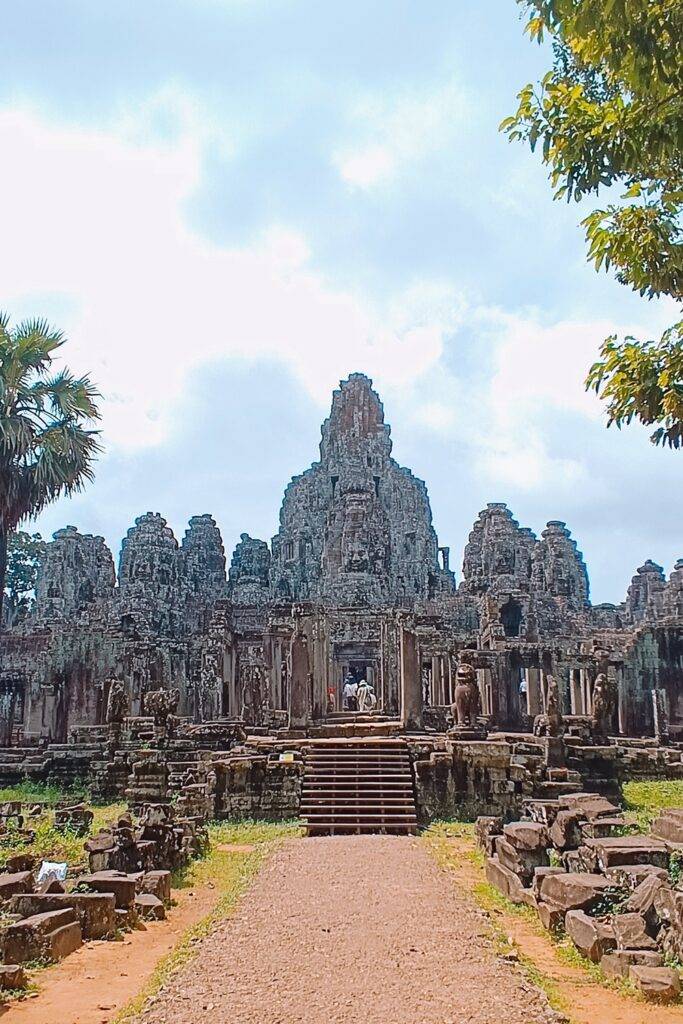
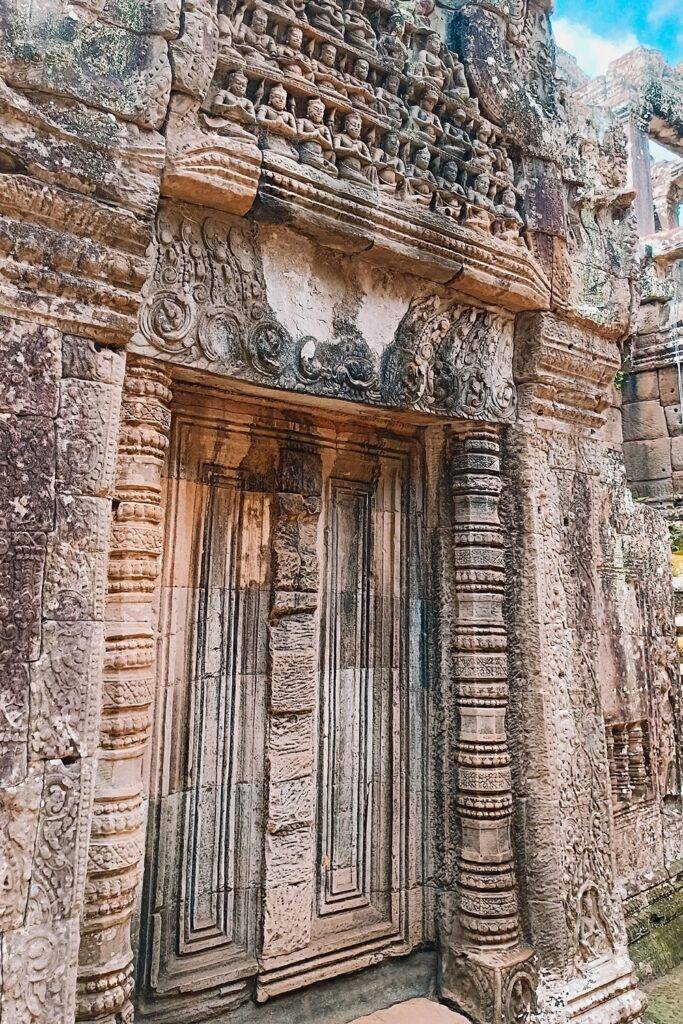
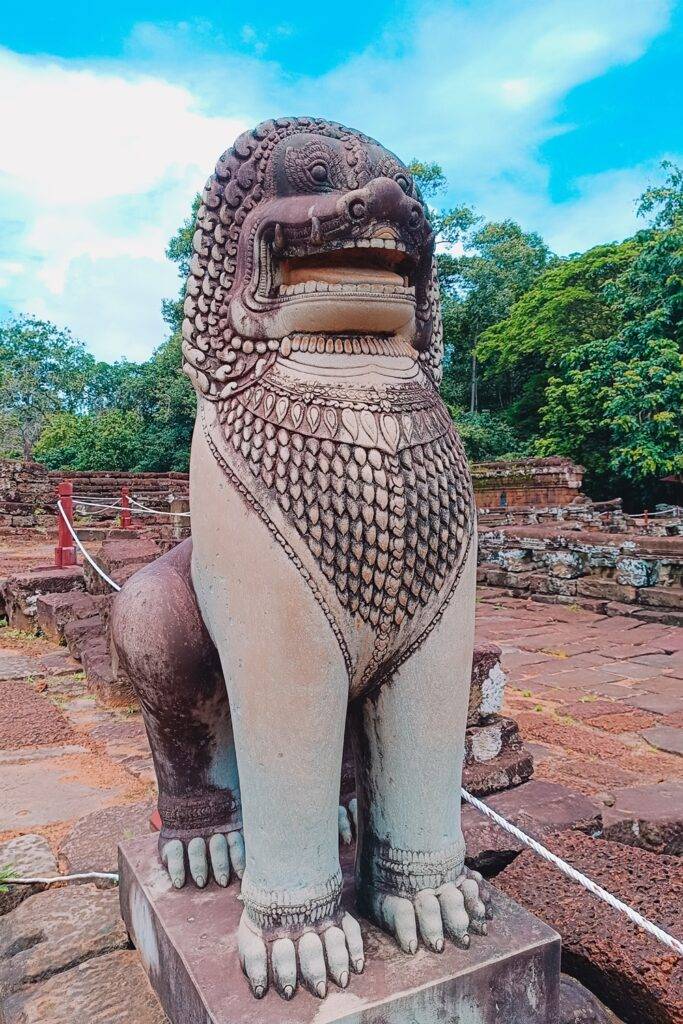
Where to Stay When Visiting Angkor Wat
Siem Reap is well set up for tourism, with options for every kind of traveler — from backpacker hostels to boutique hotels and luxury resorts. It’s easy to get around no matter where you stay, but being somewhat close to Pub Street or the Old Market area makes things extra convenient.
Budget-Friendly
- Onederz Hostel – Super clean, social without being too rowdy, and has a rooftop pool. Great value for backpackers.
- Lub d Siem Reap – Feels more like a boutique hotel than a hostel. Trendy design, friendly staff, and also has a pool.
Mid-Range
- The Urban – Quiet boutique hotel tucked down a side street but still walkable to the night market. Stylish rooms and a nice little pool.
- Viroth’s Hotel – Came highly recommended by other travelers. Retro design, fantastic service, and a central location.
Splurge
- Jaya House River Park – Ethical, eco-friendly luxury with incredible attention to detail. Comes with free spa treatments and unlimited tuk-tuk rides.
- Shinta Mani Angkor – Designed by renowned architect Bill Bensley, this upscale spot combines art, comfort, and great hospitality.
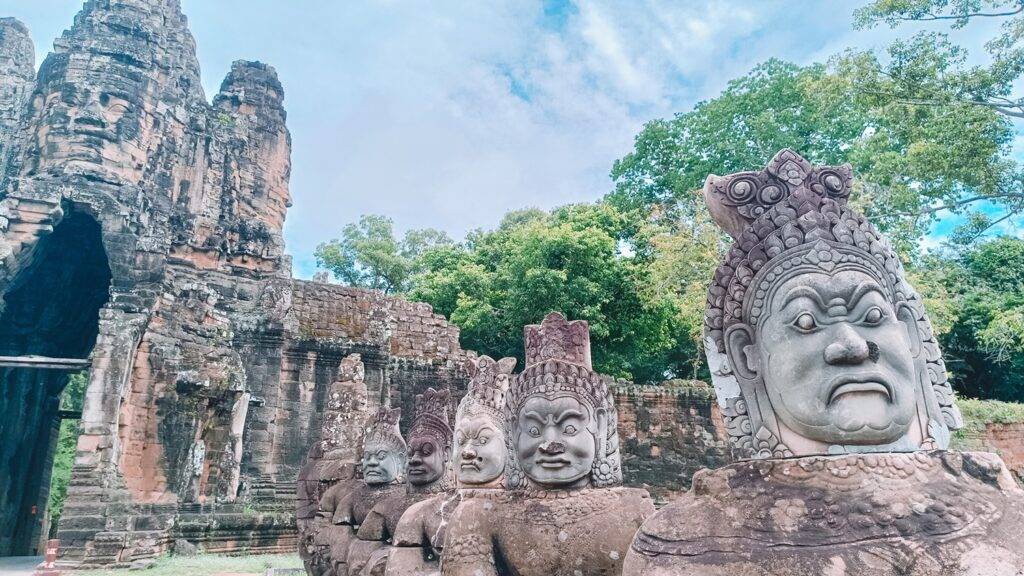
A Note on Location
Siem Reap is compact — most hotels offer free tuk tuk service to the temples or the city center, or you can easily hail one for a couple of dollars. If you’re planning to catch sunrise at Angkor Wat, it’s worth confirming early tuk tuk availability with your accommodation.
Final Thoughts
Angkor Wat is one of those places that lives up to the hype — ancient, mysterious, and humbling in scale. It’s easy to feel overwhelmed when planning a visit, but give yourself time, stay hydrated, and don’t try to see everything in a single day. We loved exploring both the famous temples and the quieter corners of the park, where the jungle is slowly reclaiming the stones. Whether you’re into history, photography, or just chasing that sunrise moment, Angkor will leave a mark.
Save it on Pinterest for later:







